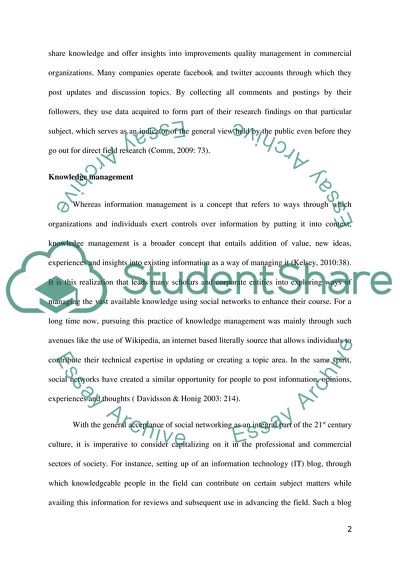Cite this document
(Knowledge Management, Social Networks and Innovation - Twitter Assignment, n.d.)
Knowledge Management, Social Networks and Innovation - Twitter Assignment. Retrieved from https://studentshare.org/social-science/1765666-knowledge-management-social-networks-and-innovation-twitter
Knowledge Management, Social Networks and Innovation - Twitter Assignment. Retrieved from https://studentshare.org/social-science/1765666-knowledge-management-social-networks-and-innovation-twitter
(Knowledge Management, Social Networks and Innovation - Twitter Assignment)
Knowledge Management, Social Networks and Innovation - Twitter Assignment. https://studentshare.org/social-science/1765666-knowledge-management-social-networks-and-innovation-twitter.
Knowledge Management, Social Networks and Innovation - Twitter Assignment. https://studentshare.org/social-science/1765666-knowledge-management-social-networks-and-innovation-twitter.
“Knowledge Management, Social Networks and Innovation - Twitter Assignment”, n.d. https://studentshare.org/social-science/1765666-knowledge-management-social-networks-and-innovation-twitter.


